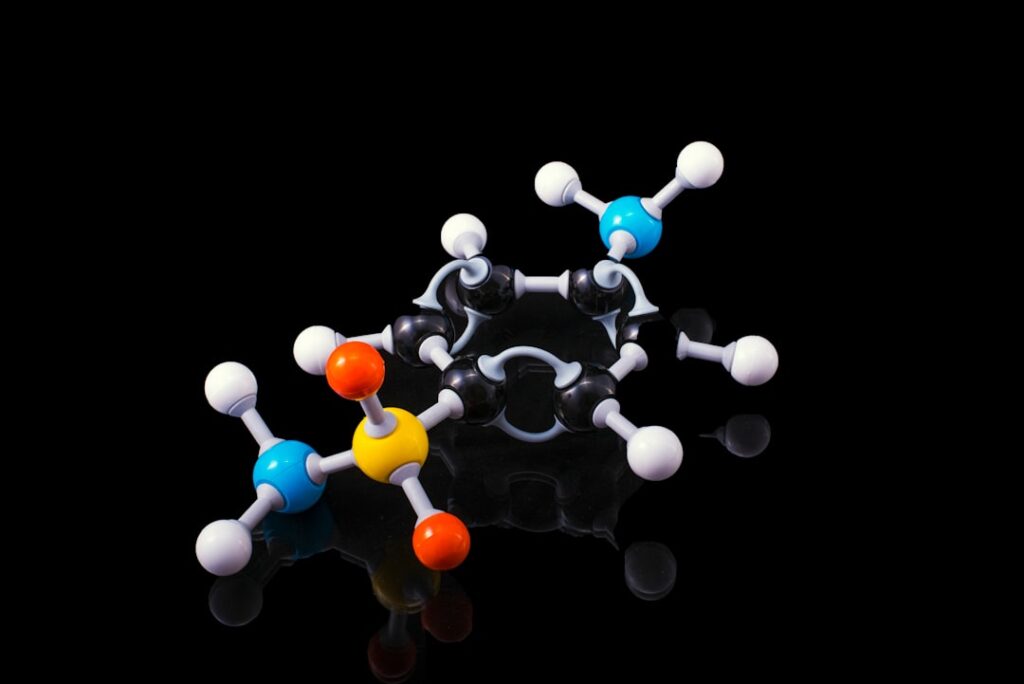Understanding Stimulus Control
Stimulus control is a fundamental concept in the field of Applied Behavior Analysis (ABA). It plays a crucial role in shaping behavior and enhancing learning outcomes. This section will provide a clear definition and explore the basics of stimulus control, highlighting its importance in the context of behavior analysis.
Definition and Basics
Stimulus control refers to the influence that stimuli have on behavior. In ABA, it refers to the ability of specific stimuli to consistently evoke a particular response. When a behavior is under stimulus control, it occurs reliably in the presence of certain stimuli, but not in their absence.
To understand stimulus control, it is important to recognize the distinction between discriminative stimuli (SD) and stimuli that do not evoke the behavior (S-delta). Discriminative stimuli are the cues or signals that indicate the availability of reinforcement for a particular behavior. In contrast, S-delta indicates the absence of reinforcement.
Stimulus control is established through a process called discrimination training. During this training, learners are taught to respond to specific stimuli while differentiating them from other stimuli that do not signal the same response. This discrimination helps individuals generalize their behavior and respond appropriately in different situations.
Importance of Stimulus Control
Stimulus control is crucial for several reasons within the context of behavior analysis. Here are some key reasons why stimulus control is important:
- Promoting Desired Behavior: By establishing stimulus control, individuals learn to respond appropriately to specific cues or situations. This enables the reinforcement of desired behavior, leading to its maintenance and generalization.
- Enhancing Learning: Stimulus control facilitates the acquisition and retention of new skills. When learners can discriminate between relevant cues and irrelevant ones, they can focus their responses appropriately, leading to more effective learning outcomes.
- Reducing Problematic Behavior: Stimulus control can also be utilized to decrease problematic behaviors. By placing certain behaviors under the control of specific cues, interventions can be designed to modify the antecedents and consequences associated with those cues, leading to behavior change.
- Facilitating Generalization: Stimulus control helps individuals generalize their behavior across diverse settings and contexts. Once a behavior is under stimulus control, learners can respond appropriately in situations that share similar characteristics to the original training setting.
Understanding stimulus control is essential for practitioners, educators, and caregivers working in the field of ABA. By comprehending the principles and techniques associated with stimulus control, professionals can design effective interventions and strategies to optimize learning and behavior change.
Transfer of Stimulus Control
Definition and Concept
In the field of Applied Behavior Analysis (ABA), stimulus control transfer refers to the process by which a behavior that was originally under the control of one stimulus comes under the control of a different stimulus. Stimulus control is the concept that behavior is influenced by the presence or absence of specific stimuli in the environment. When a behavior is transferred to a new stimulus, it means that the behavior is now reliably evoked by the new stimulus, rather than the original one.
Stimulus control transfer is an important aspect of behavior change interventions in ABA. It allows individuals to generalize their learned behaviors to new settings, people, or objects. By transferring stimulus control, individuals can demonstrate the desired behavior in a variety of situations, which enhances their overall learning and adaptability.
Examples of Stimulus Control Transfer
To better understand stimulus control transfer, here are a few examples:
- Teaching a child to follow directions: Initially, a child may learn to follow directions from their parent at home. However, the goal is for the child to generalize this behavior to other settings, such as school or community. Through stimulus control transfer, the child learns to respond to the instructions from different individuals and in various environments.
- Training a dog to obey commands: A dog may initially learn to sit on command when the owner is present. However, with stimulus control transfer, the dog can learn to sit when given the command by other family members or even in public places. The behavior becomes reliably controlled by the verbal command, regardless of who gives it.
- Teaching a person to use a new piece of technology: When learning to use a new device, such as a smartphone, the person initially relies on specific prompts or cues to navigate the device’s functions. As they become more proficient, stimulus control is gradually transferred from the external prompts to internal cues and automatic responses. The person can then use the device without relying on explicit instructions.
Stimulus control transfer is a fundamental concept in ABA, as it allows individuals to generalize and apply their learned behaviors in a variety of contexts. By systematically transferring stimulus control, individuals can acquire greater independence and flexibility in their behavior.
Applied Behavior Analysis (ABA) Techniques
Applied Behavior Analysis (ABA) is a scientific approach that utilizes principles of behavior to bring about positive changes in individuals’ behavior. It is widely used in various settings, including education, therapy, and rehabilitation. ABA techniques are particularly effective in promoting stimulus control transfer, which enhances learning and behavior management.
Overview of ABA
ABA is a systematic and evidence-based approach that focuses on understanding and modifying behavior through observation, analysis, and intervention. It relies on the principles of reinforcement and behavior shaping to teach new skills, reduce challenging behaviors, and promote independence.
The core principles of ABA include:
- Operant Conditioning: ABA utilizes operant conditioning principles to understand the relationship between behavior and its consequences. It emphasizes positive reinforcement to increase desired behaviors and utilizes strategies such as shaping and prompting to teach new skills.
- Functional Analysis: ABA practitioners conduct functional analyses to identify the antecedents and consequences that influence behavior. This analysis helps in developing effective interventions to address challenging behaviors.
- Data Collection and Analysis: ABA relies on data collection to monitor progress, make informed decisions, and evaluate the effectiveness of interventions. Data-driven decision-making ensures that interventions are tailored to individual needs and produce meaningful outcomes.
ABA Strategies for Stimulus Control
Stimulus control is a fundamental concept in ABA that involves manipulating environmental cues to elicit desired behaviors. ABA strategies for stimulus control aim to increase the likelihood of a target behavior occurring in the presence of specific stimuli. Some commonly used techniques include:
- Discrimination Training: Discrimination training involves teaching individuals to respond differently to specific stimuli. By reinforcing correct responses in the presence of a discriminative stimulus (SD) and withholding reinforcement in the presence of other stimuli (SΔ), individuals learn to discriminate between relevant and irrelevant cues.
- Prompting: Prompting is a technique used to evoke the correct response in the initial stages of learning. Gradually, prompts are faded out to promote independent responding. Prompts can be physical, verbal, or visual, depending on the individual’s needs and abilities.
- Generalization Training: Generalization training focuses on teaching individuals to respond appropriately to stimuli that are similar to the original training stimuli. This helps to extend learned behaviors to real-life situations and different environments.
- Errorless Teaching: Errorless teaching involves structuring learning experiences in a way that minimizes errors and maximizes success. It prevents incorrect responses by providing prompts or cues that guide individuals toward the correct response.
- Behavioral Momentum: Behavioral momentum is a technique that involves starting with easy or highly preferred tasks to build momentum and increase the likelihood of engaging in more challenging tasks. This helps individuals maintain motivation and success throughout an instructional session.
By employing these ABA techniques, professionals can effectively promote stimulus control transfer, enabling individuals to acquire new skills and exhibit appropriate behaviors in a variety of settings.
In the next section, we will explore the steps involved in implementing stimulus control transfer and discuss the challenges that may arise along the way.
Implementing Stimulus Control Transfer
When it comes to enhancing learning and behavior using Applied Behavior Analysis (ABA), implementing stimulus control transfer is a key component. This process involves shifting the control of behavior from one stimulus to another, allowing individuals to respond correctly to new stimuli in a given context. Let’s explore the steps to transfer stimulus control and the challenges that may arise, along with potential solutions.
Steps to Transfer Stimulus Control
- Discrimination Training: Begin by teaching the individual to discriminate between two or more stimuli. For example, if the goal is to transfer control from a picture of an apple to the actual apple, discrimination training would involve teaching the individual to respond to the picture but not to other similar stimuli.
- Stimulus Fading: Gradually reduce the presence or salience of the original stimulus that elicits the desired response. For instance, if a child is learning to identify the letter “A” using a large, bold font, the size and boldness of the letter could be gradually reduced until the child can identify it in a standard font.
- Prompting and Prompt Fading: Provide prompts to help the individual respond correctly to the new stimulus. Prompting can include verbal cues, gestures, or physical guidance. As the individual becomes more proficient, the prompts are gradually faded out, allowing them to respond independently.
- Generalization Training: Generalize the behavior to various settings, people, and situations. This step involves introducing the new stimulus in different contexts to ensure that the individual can respond correctly regardless of the specific conditions.
- Maintenance and Monitoring: Once stimulus control has been successfully transferred, it is important to monitor the individual’s performance to ensure the behavior remains consistent over time. Ongoing reinforcement and periodic assessments can help maintain the desired behavior.
Challenges and Solutions
Implementing stimulus control transfer may come with a set of challenges. Some common challenges include:
- Response Generalization: It is essential to ensure that the desired response is generalized to other similar stimuli. This can be addressed by systematically introducing variations of the stimuli during the discrimination training phase.
- Overgeneralization: Sometimes, individuals may respond to stimuli that are similar but not identical to the target stimulus. To address this, systematically reinforce responses to the correct stimulus and provide corrective feedback for responses to similar but incorrect stimuli.
- Maintenance of Behavior: Sustaining the transferred stimulus control over time can be challenging. Regular reinforcement and periodic reviews of the behavior can help to maintain the desired response.
- Individual Differences: Each individual is unique, and their learning needs and abilities may vary. It is important to tailor the steps to transfer stimulus control to the individual’s specific needs, adjusting the pace and intensity of the training as necessary.
By following these steps and addressing the challenges that may arise, stimulus control transfer can be effectively implemented in ABA practices. This process enhances learning and behavior by enabling individuals to respond correctly to new stimuli, promoting independence and functional skills.
Real-Life Applications
Stimulus control, a fundamental concept in applied behavior analysis (ABA), has various real-life applications. Understanding how stimulus control works and utilizing it in everyday situations can enhance learning and improve behavior. Let’s explore some common real-life applications of stimulus control and the benefits they offer.
Stimulus Control in Everyday Life
Stimulus control is present in numerous aspects of our daily lives. From simple routines to complex tasks, stimulus control plays a vital role in guiding our behavior. Some examples of stimulus control in everyday life include:
- Alarm Clocks: Waking up to the sound of an alarm clock is an example of stimulus control. The sound of the alarm serves as a discriminative stimulus, signaling the specific behavior of waking up and getting out of bed.
- Traffic Signals: Traffic signals provide stimulus control by using red, yellow, and green lights to regulate traffic flow. Each color acts as a discriminative stimulus, indicating the appropriate behavior for drivers.
- Remote Controls: Remote controls for electronic devices, such as televisions or air conditioners, allow us to control their functions based on visual or auditory cues. These cues serve as discriminative stimuli for specific behaviors, like changing channels or adjusting the temperature.
- Computer Interfaces: Graphical user interfaces (GUIs) on computers and smartphones use visual cues to prompt specific actions. Icons, buttons, and menus act as discriminative stimuli, guiding users to perform desired tasks.
Benefits of Utilizing Stimulus Control
Utilizing stimulus control in everyday life offers several benefits, including:
- Efficiency: Stimulus control helps streamline our actions by providing clear cues and prompts for appropriate behaviors. This leads to increased efficiency and reduces the need for constant decision-making.
- Consistency: By applying stimulus control, we create a consistent environment that supports desired behaviors. Consistency helps individuals understand what is expected of them and facilitates the learning process.
- Reduced Errors: Stimulus control reduces the likelihood of errors by providing clear cues and minimizing confusion. When specific stimuli reliably guide behavior, errors and mistakes are less likely to occur.
- Improved Learning: Stimulus control enhances learning by reinforcing desired behaviors and helping individuals focus on relevant cues. It allows for the transfer of skills and knowledge across different contexts and situations.
- Behavior Management: Stimulus control can be used as a tool for behavior management. By manipulating the presence or absence of specific stimuli, we can influence behavior and shape it towards desired outcomes.
Understanding and utilizing stimulus control in everyday life can lead to more efficient and effective behavior management, improved learning outcomes, and a smoother experience in various tasks and routines.
In the next section, we will explore the future of stimulus control, including evolving practices and ongoing research and innovations.
Future of Stimulus Control
As the field of Applied Behavior Analysis (ABA) continues to evolve, the future of stimulus control holds exciting possibilities. Researchers and practitioners are constantly exploring new practices, conducting research, and developing innovative techniques to enhance stimulus control transfer.
Evolving Practices
The future of stimulus control is shaped by the evolving practices within the field of ABA. Professionals are continuously refining their understanding of stimulus control and its applications. This deeper understanding allows for more effective interventions and strategies to be developed.
Additionally, advancements in technology have opened up new avenues for enhancing stimulus control transfer. The use of virtual reality, augmented reality, and interactive digital platforms offer innovative ways to create controlled environments that facilitate stimulus control learning.
Research and Innovations
Ongoing research plays a critical role in shaping the future of stimulus control. Researchers are investigating various aspects of stimulus control transfer to further enhance its effectiveness. They are exploring the underlying mechanisms, factors influencing transfer, and the impact of different interventions.
Innovations in teaching methodologies and interventions are being developed to optimize stimulus control transfer. These innovations may include the use of personalized interventions, adaptive technologies, and novel instructional strategies. By staying at the forefront of research and embracing innovative approaches, practitioners can continually refine their techniques and improve outcomes.
The future of stimulus control also involves collaboration between researchers, practitioners, and educators. By sharing knowledge and insights, professionals can collectively contribute to the advancement of stimulus control transfer techniques. This collaboration fosters a dynamic environment that promotes ongoing learning and improvement.
By embracing evolving practices, engaging in research, and fostering innovation, the future of stimulus control holds great promise. The field of ABA will continue to refine its understanding and develop new techniques to enhance stimulus control transfer. These advancements will contribute to more effective interventions and improved outcomes for individuals receiving ABA services.
References
- https://study.com/academy/lesson/shaping.html
- https://cla.auburn.edu/psychological-sciences/applied-behavior-analysis/about-behavior-analysis/#:~:text=Behavior%20analysis%20is%20a%20science,%2C%20describe%2C%20and%20predict%20behavior.
- https://www.sciencedirect.com/topics/psychology/discriminative-stimulus#:~:text=A%20discriminative%20stimulus%20is%20the,their%20presence%20in%20the%20past.

 We've just released an article!
Check out our blog!
We've just released an article!
Check out our blog!



